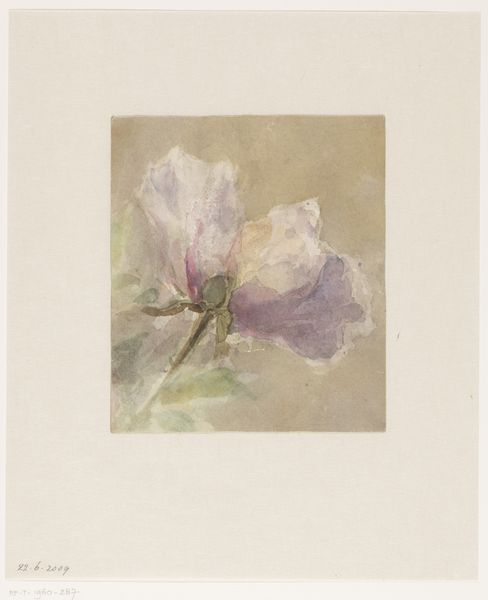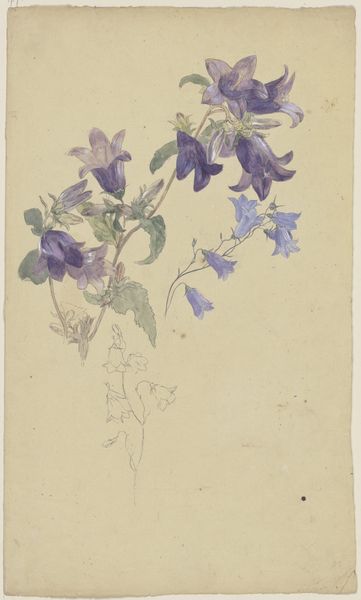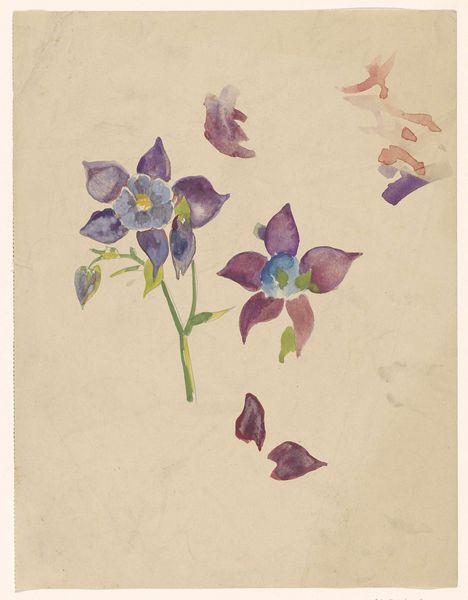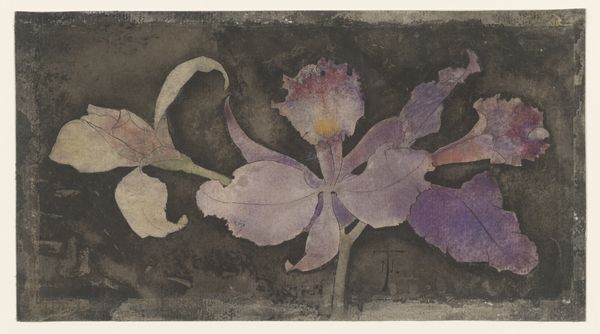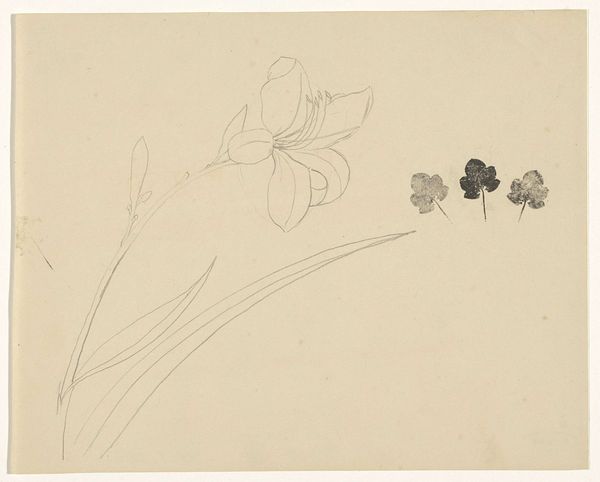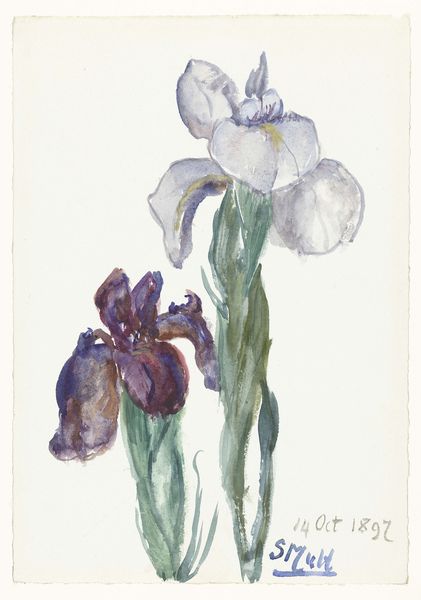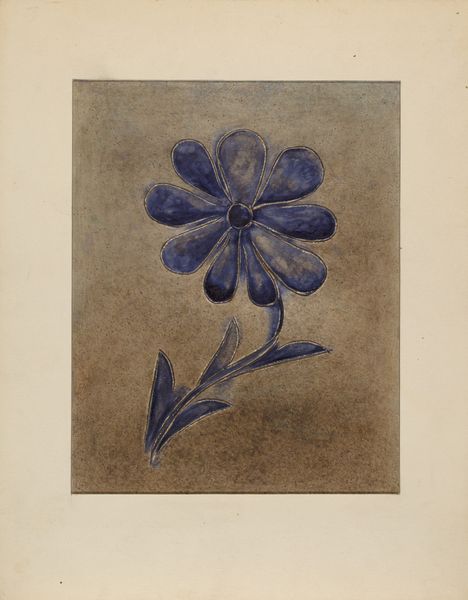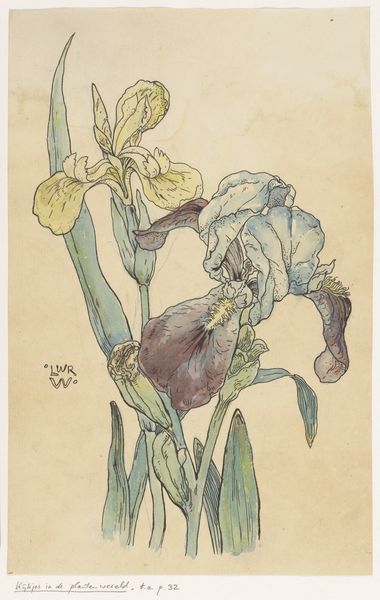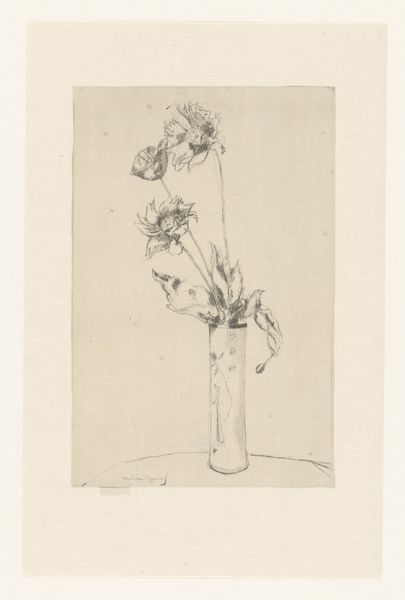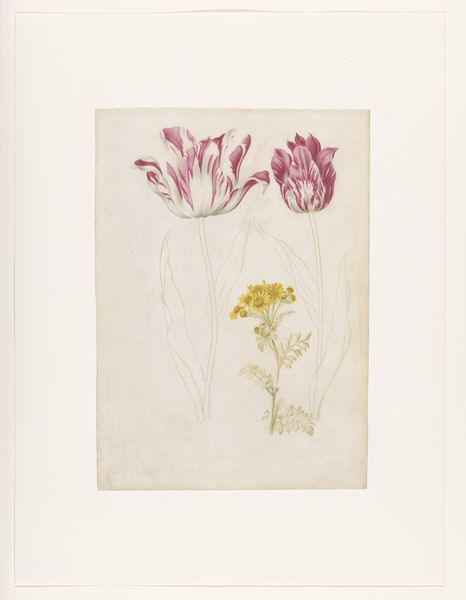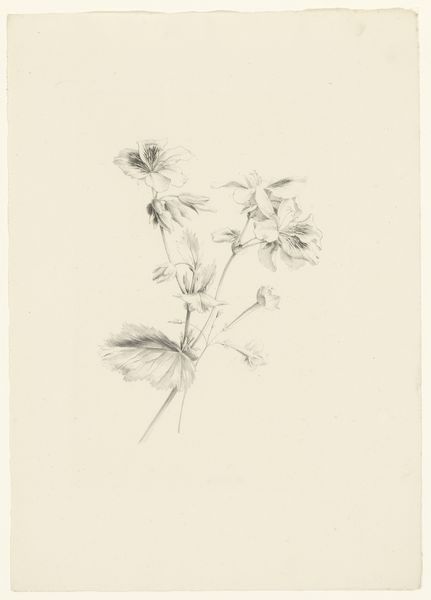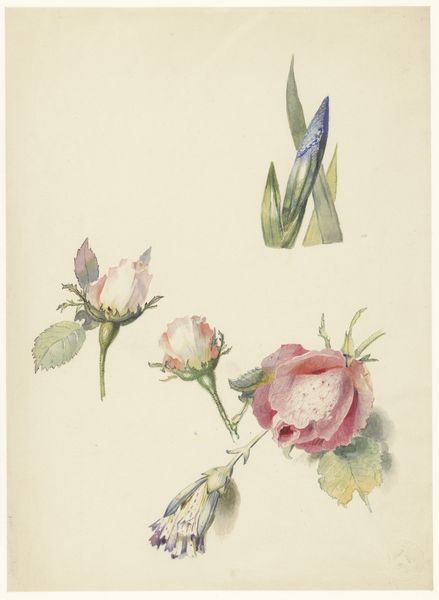
Dimensions: height 307 mm, width 380 mm
Copyright: Rijks Museum: Open Domain
Curator: Willem van Konijnenburg’s work, “Studies van een iris en ridderspoor,” dating roughly from 1878 to 1943, presents us with a collection of floral studies, executed in delicate watercolor. Editor: My first impression is one of fragile beauty. The colors are muted, almost pastel, and there’s a real sense of light capturing the translucence of the petals. Curator: Indeed, the iris holds immense symbolic weight throughout art history. Irises frequently symbolize faith, hope, and wisdom. Its association with royalty goes back centuries, influencing its meaning as representing power and majesty. Do you see those connections evoked here? Editor: I'm struck more by the paper itself. The visible texture and slight imperfections create a tactile experience even before you register the floral representation. You see the process laid bare. The choice of watercolor emphasizes a certain ephemerality—these are not weighty oils but rather quick observations. Curator: I appreciate your perspective. The watercolor does indeed emphasize the fleeting nature of the blooms. Look at how van Konijnenburg used washes of color to convey the form, almost letting the paper breathe through the paint. The underlying sketches too! Are they part of the intention of exposing materiality or did they signify more to the artist? Editor: I think that decision elevates it beyond simple botanical illustration. The visible sketch reminds us of the artist’s hand, their process of selection, of capturing this particular flower at this specific moment. Curator: It speaks to the beauty in imperfection and the process of observation, inviting a different understanding of what it means to represent nature. Editor: Yes, this approach reflects a shift in the role of the artist away from simply reproducing reality and more towards highlighting their subjective encounter with it. Curator: Precisely. In many religious iconographies, the iris evokes certain feminine aspects of divinity, a symbolic bridge, but in this naturalistic scene those links are absent—which adds another layer of insight into cultural context. Editor: Examining it through the lens of materiality shifts the focus onto the labor of creating the image, transforming our understanding. It compels us to confront the conditions that led to this picture being made. Curator: A compelling point that illuminates another dimension to these delicate flower studies. Editor: I'll never see a simple watercolor flower study the same way. Thanks to a dual perspective.
Comments
No comments
Be the first to comment and join the conversation on the ultimate creative platform.
